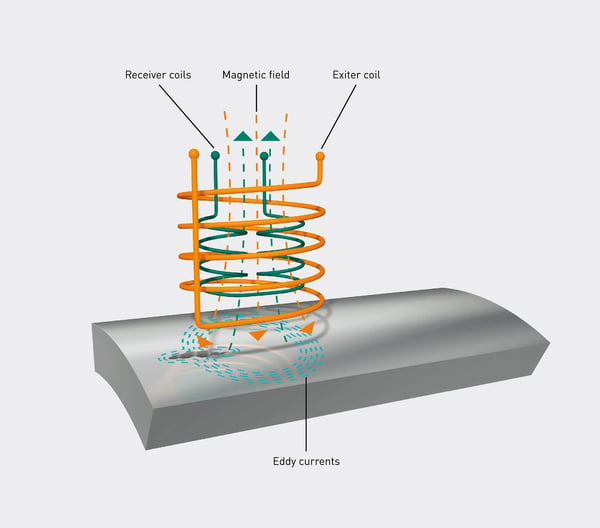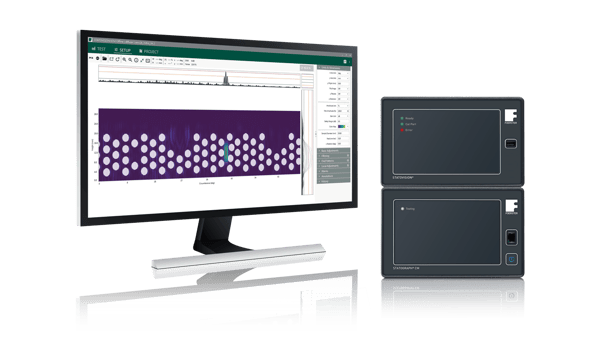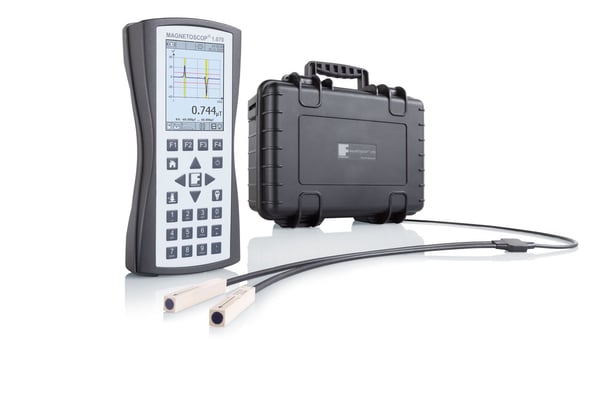Safety-relevant components are used in more and more applications in the automotive and energy industries. Quality, strength, and durability are ever-increasing requirements. In particular, large bearing rings and large gears are becoming series products due to the increasing number of wind turbines.
Since replacing defective components requires great effort after installation, complete monitoring of the quality is crucial. Cracks prove to be particularly dangerous, as they grow due to the high loads and can ultimately lead to fatigue failure. Another problem can be magnetic spots, i.e. locally occurring magnetic fields. On the one hand, metal chips can adhere here and lead to damage; on the other, they have a direct influence on crack testing with eddy currents.

Fig.1: Eddy Current Testing principle
Automated testing of bearing rings
Since the need for tested bearing rings is sharply increasing, manual testing is no longer cost-effective. In the past, it took more than an hour to test a bearing ring with a diameter of 600 mm with magnetic powder and the U-shaped iron yoke. Now, there is an increasing need for faster and more reliable solutions. Therefore, an automated test system that can test for several types of errors in one test process is essential. Today's testing systems can inspect large bearing rings up to a diameter of 5 meters with a height of 1 meter and can weigh up to 5,000 kilograms. The bearing is placed on a turntable through a crane, with clamping jaws to ensure that the ring is centered and runs smoothly. Via an arm, the probes are guided along the rotating bearing ring. Electronic distance compensation is used for a more accurate test. Individual test areas (inside, outside, and the bearing edge) can have different setting parameters that can be configured using the software.
Which systems are used for crack detection and magnetic spot detection?
For the non-destructive testing of surface defects such as cracks or holes, FOERSTER recommends the eddy current test system STATOGRAPH CM. Several eddy current probes are used in parallel to detect cracks in the bearing ring. Thereby, a large area can be checked and the lead time can be reduced significantly. The precisely guided test arm along with the probes ensure the detection of even the smallest hairline cracks. Furthermore, the STATOVISION software creates images (C-scans) of the outer surfaces that allow the visualization of the flaws and highlights them in color. Interfering contours such as smear holes can be easily hidden in the software. A calibrated Hall sensor facilitates the detection of magnetic spots. These can also be visualized through the software.

Fig.2: STATOVISION and STATOGRAPH CM
FOERSTER: Your specialist for non-destructive testing systems
FOERSTER offers you highly sensitive test systems for both test tasks. The STATOGRAPH CM test device reliably detects the finest cracks. To make the smallest magnetic differences visible and check for magnetic spots, we recommend the MAGNETOSCOP LINE. The STATOVISON software provides complete evaluation and data documentation.
 Fig.3: MAGNETOSCOP
Fig.3: MAGNETOSCOP
Do you have any questions? Then feel free to contact our experts!